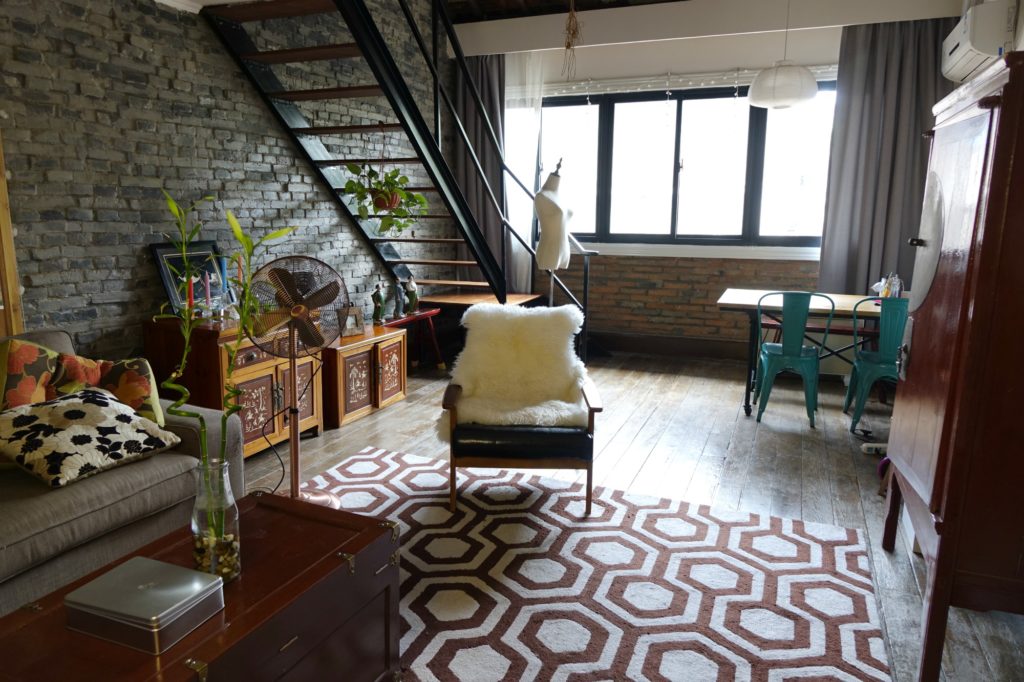
My old Shanghai style lane house apartment was featured on Apartment Therapy, and is located in a lilong in the Former French Concession. It was built in 1927, making it 90 years old this year. I loved living in this apartment, for its amazing antique furniture, and for its quintessential Shanghainese community lifestyle.
Last year was a big year for me, I got married and had my first baby. Both were wonderful life events, but they did signal the end of my wistful, carefree single life, and unfortunately the need to move in with my husband and leave behind my beloved beautiful old Shanghai style lane house apartment.
It was where this blog started, and the backdrop to many of the first images that I posted here. I stubbornly held onto the lease despite moving out half way through the year, so that I could keep this space of mine just a little while longer. Now that it is coming to an end, I wrote this post half to share, but also half selfishly, so that I can always have these photos in my memory.
I am so super thrilled that the team at Apartment Therapy also shared my love of this apartment, and featured it as a house call that you can see here.
The lane house: the shikumen (石库门) and the lilong (里弄)
The apartment is part of a well preserved Shanghainese lane house development called Mingdeli (明德里), built in 1927. Lane house is the English name given loosely to a specific type of traditional Shanghainese housing, the shikumen, which is arguably the original lilong (里弄or longtang, longdang, 弄堂) residence.
Shikumen (石库门) are terrace-style houses, where each house shares common walls with neighbours on either side, and first began to be built in the mid 1800s. Their uniqueness lies in the fact that they combined both Chinese and Western elements in their structure, such as a courtyard (traditionally Chinese), and decorative stone arches over front doors (Western influence). Shikumen were arranged in long rows on either side of narrow alleys, called the longtang. These were very popular back in the day, and apparently at the height of their popularity made up more than half of all housing in Shanghai.
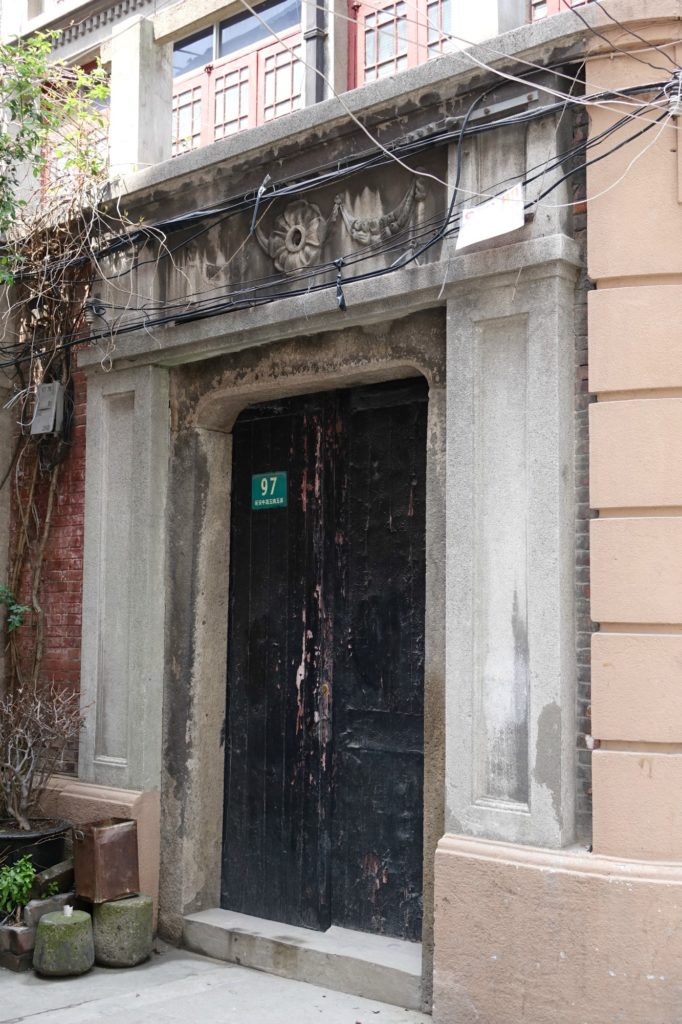
A typical shikumen front entrance. There are Western style decorative elements above the door, and inside a traditional Chinese courtyard.
Shikumen evolved through several phases, and most of what remains today are the “new type” or “reformed” shikumen (新式或改良式石库门), built between 1919-1930. Mingdeli is a typical example of the new type shikumen.
These new type shikumen were three storeys high, and often built in relatively large rectangular developments. Usually there is a central lane (trunk lane) extending from the front entrance of the compound to the back entrance, and smaller lanes (branch lanes) extending from both sides of the trunk lane, with shikumen built on either sides of the branch lanes. An aerial view would show houses arranged in a dense, regular, grid-like pattern.
Arched doorways with the name of the compound were usually erejected at both the front and back entrances of the central laneway. And at the beginning of the 20th century cars were popular enough that the trunk laneways were wide enough to accommodate them.

The centre or trunk lane of the Mingdeli lilong, wide enough to accomodate cars
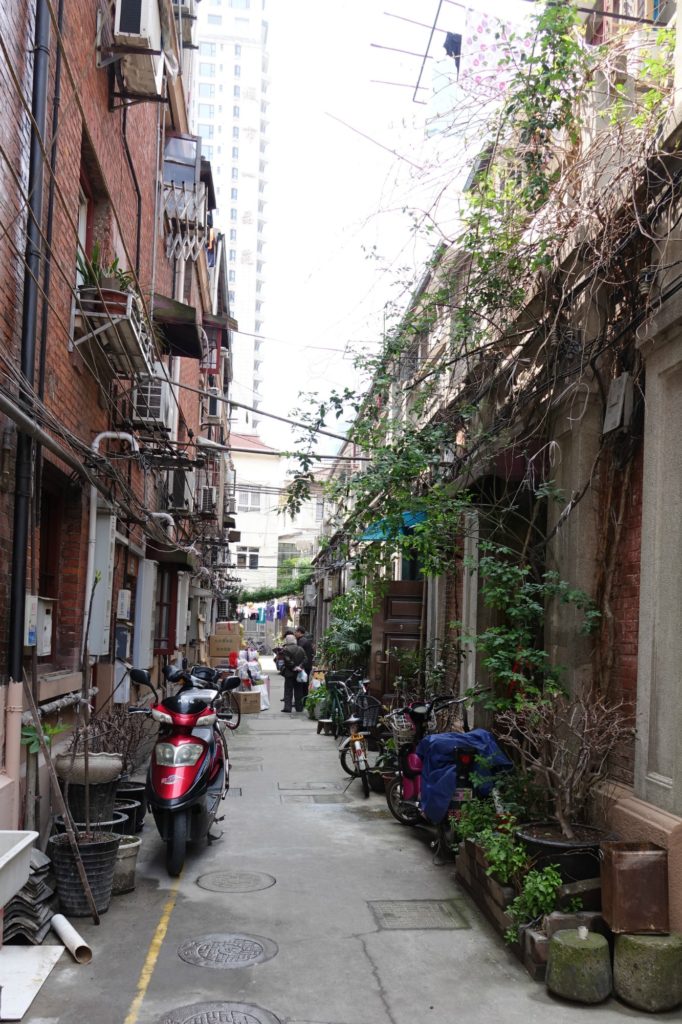
The narrow branch or side lanes on either side of the trunk lane, with shikumen or terrace-style houses on either side
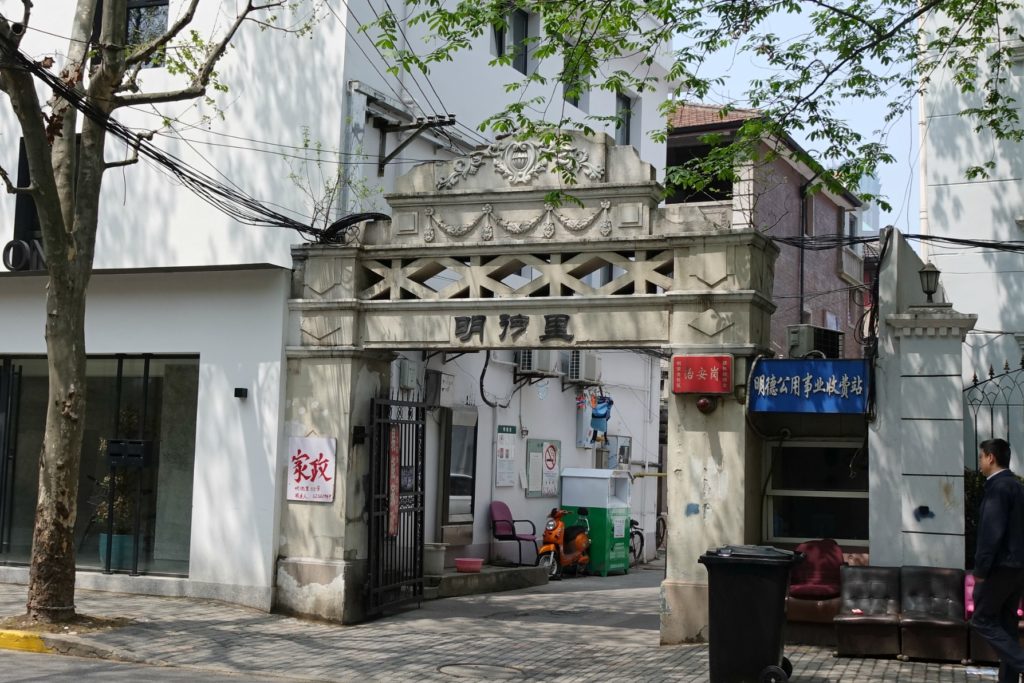
The back main entrance to the Mingdeli lilong, a decorated arch at the back of the centre lane
Traditionally each shikumen house was owned by one family. The kitchen and sitting rooms were at the bottom floor, and living quarters on the second and third floors. But after the communist party came into power in China in 1949, wealthier families were forced to divide up their properties, and each shikumen was split into 3, 4, 5 or even more units to house multiple families. This article shows some great cross sectional views of how residents used the shikumen pre and post 1949.
The Former French Concession
My old Shanghai style lane house apartment is on middle Yan’an Road near Shaanxi Road, and at the northern end of Shanghai’s Former French Concession area (法租界). The Former French Concession is a popular residential area due to its beautiful tree-lined streets, abundance of well maintained old style low-rise buildings, and the many good quality restaurants, cafes and other conveniences that have been springing up in recent years.
For those of you who do not know the historical background to the Concessions, here is a quick summary:
The First Opium War ended in 1842 and the Qing army was defeated by the British. The unequal Treaty of Nanking was signed, where amongst a number of other terms, Hong Kong was ceded to the British. The British then also established a large concession in Shanghai, followed shortly by the Americans and the French in 1949.
An old map of Shanghai shows the city split into four – to the North the American concession, south of that was a large British Concession (the American and British concessions over time merged to become the International Concession), and south of that the French concession. The very south side of the city was the Chinese part, the Old City of Shanghai. As was the case with Hong Kong, the country which held a concession did whatever it liked within the boundaries – it governed, traded, settled and developed independently of China.
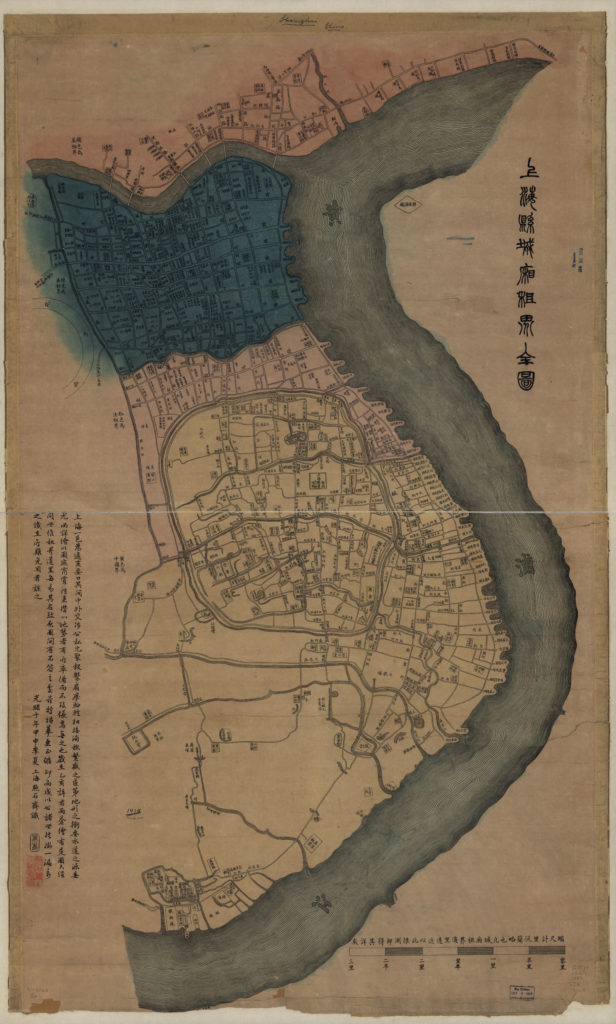
This Shanghai map from 1884 shows the 3 concessions in existence at the time: the large blue area the British concession, below that a pink collar which was the French Concession, above that also a pink strip which was the American concession, and the yellow area below the French Concession the old Shanghai city
The concessions, and in particular the French concession became the premier residential area of Shanghai by the early 1900s, and has remained largely so ever since. In fact, I am told that Shanghai today still has the largest collection of art deco buildings in the world in and around the French Concession area. This is partly due to the boom it experienced in the 20s and 30s, when the Great Depression stifled economies elsewhere in the world, but also due to the large European population living in China at the time because of its “open door” policy to war refugees.
My old Shanghai style lane house apartment
My apartment is on the 3rd and top floor of a shikumen house, or a lane house. In fact only 3 families live in this three-storeyed house – the first and second floors occupied by three generations of an old Shanghainese family, and the third floor split between my apartment and another. The bottom two floors retain a lot of the characteristics of the original shikumen structure, with a standalone kitchen on the bottom floor and a large sitting room, and the bathroom separate from the other rooms on the second floor.
As I mentioned before, each lane house used to be owned by one family, and when they were forced to split the house into units after 1949, some had to split them with neighbours or other poorer families in the community, others “got around” this requirement by splitting within the family or extended family. This was the case with my lane house, and each of the three separate units are owned by members of an extended family.
Because of the high ceilings of the old Shanghainese buildings, many have been converted into lofts, and my apartment is no exception. In fact, with the ceiling stripped to the beams, the second floor of my loft comfortably accommodates standing height, and is pretty much a second storey. This is fairly rare for converted lofts.
The apartment was newly refurbished when I moved in, and my favourite parts of the refurbishment are the stripped back bare brick walls and exposed ceiling. Besides that, it also retains some beautiful antique furniture from the owners. The downstairs living area contains a large antique Chinese cabinet (from my landlord’s great-grandmother, over 100 years old), two small antique sideboards with wooden inlay from the early 1900s, three vintage chests and two vintage long stools. When I first moved in, there was a different set of large cabinet and inlay sideboards. Both sets are beautiful, and I documented each set.

The spacious, bright living room area. The coffee table is a vintage chest, to the left of the image are the two antique Chinese sideboards with inlay, to the right of the image is the antique Chinese cabinet
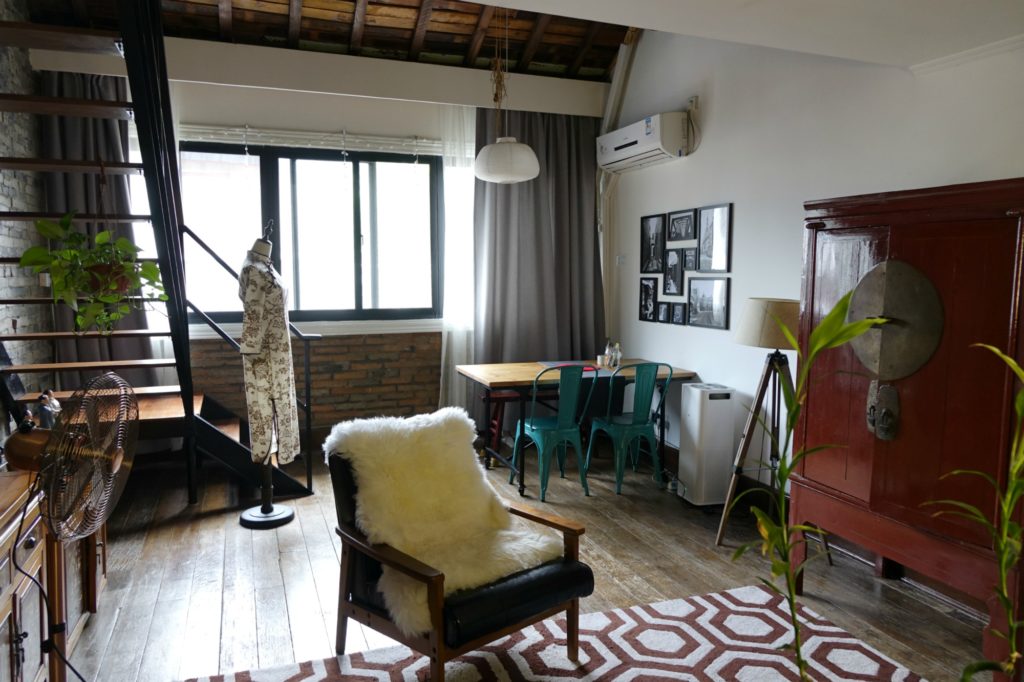
A different perspective, showing a clearer view of the dining area. I chose a more modern industrial style dining table and some bright chairs to contrast with the antique furniture
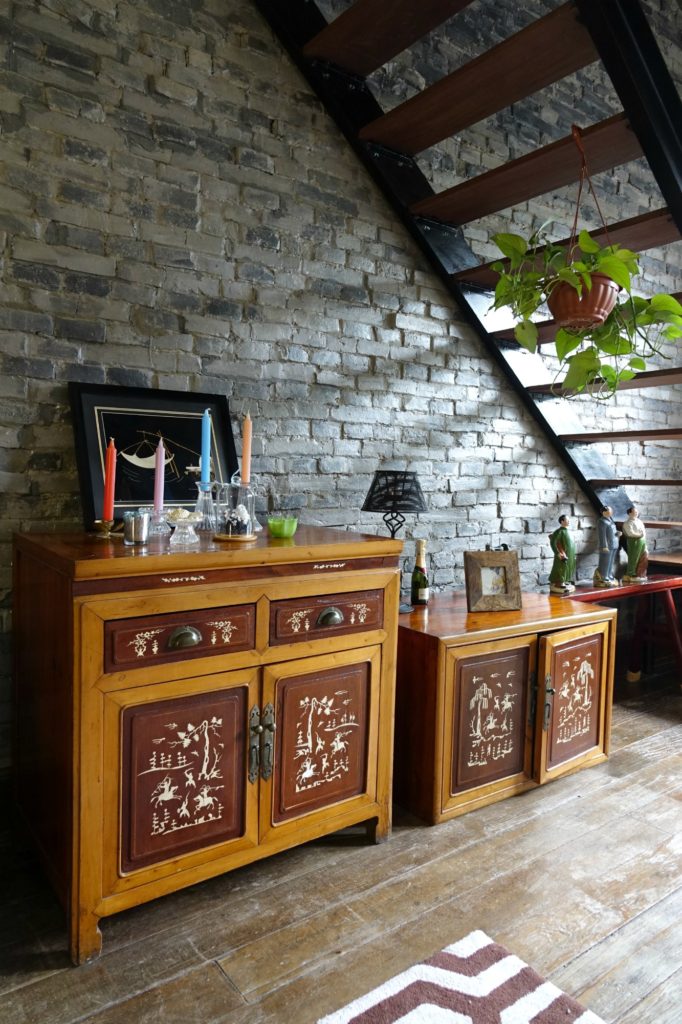
A closer view of the antique Chinese sideboards with inlay. The two pieces can be stacked on top of one another or used independently.
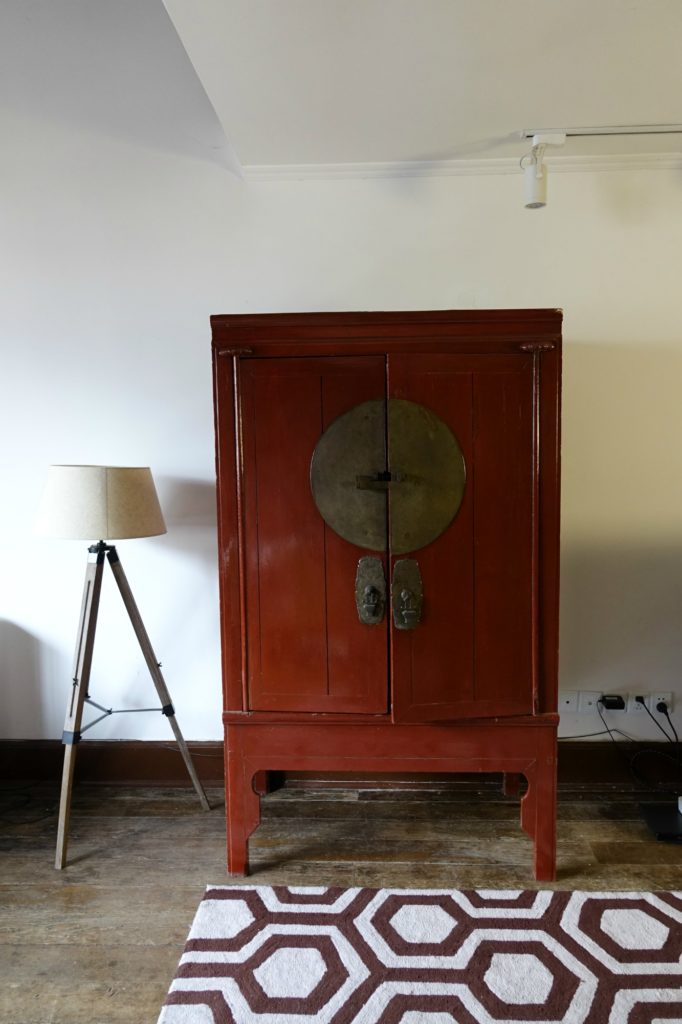
Close up of the antique Chinese cabinet, the beautifully vibrant colour is still from the original paint, apparently retained so well due to some animal blood mixed into the paint
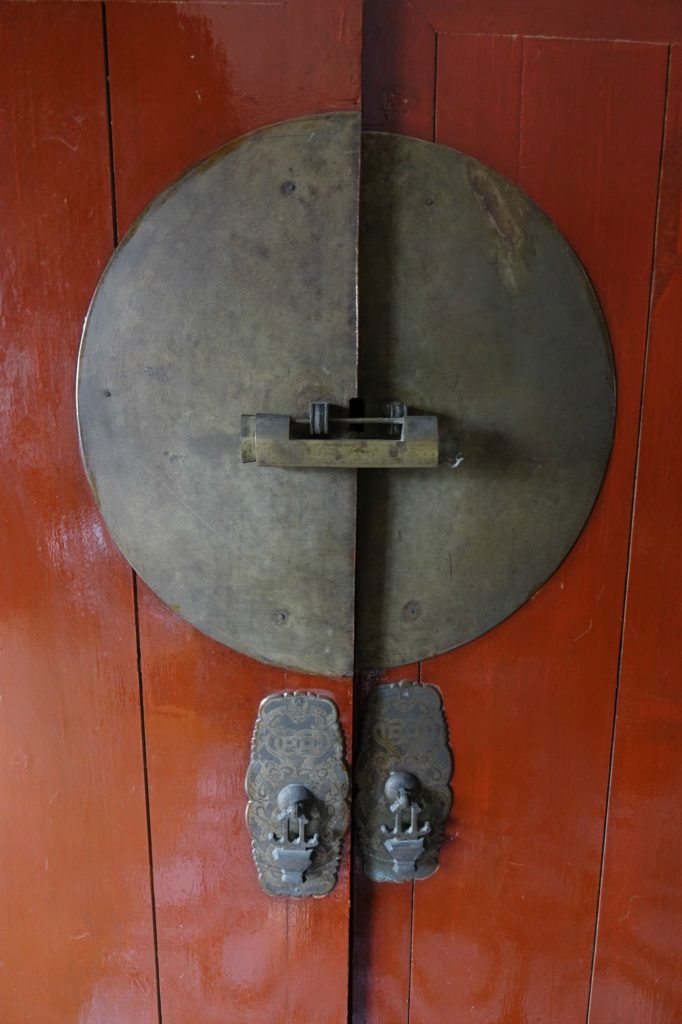
A close up of the lock on the antique Chinese cabinet
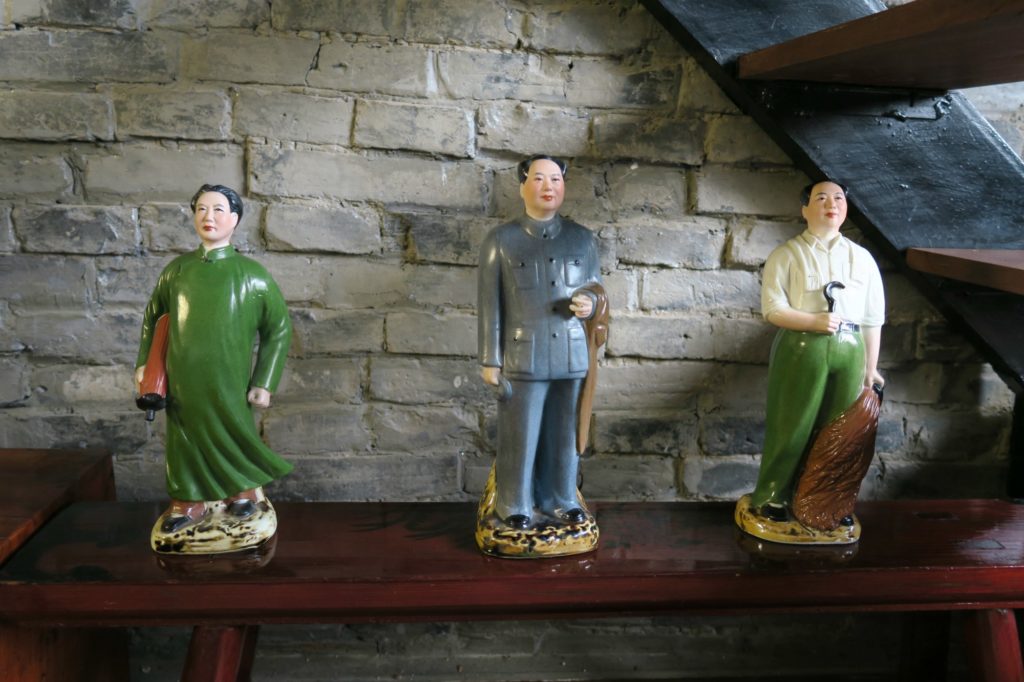
A few Mao Zedong (Mao Tse-tung) figurines made in the traditional Chinese clay figurine style that I keep
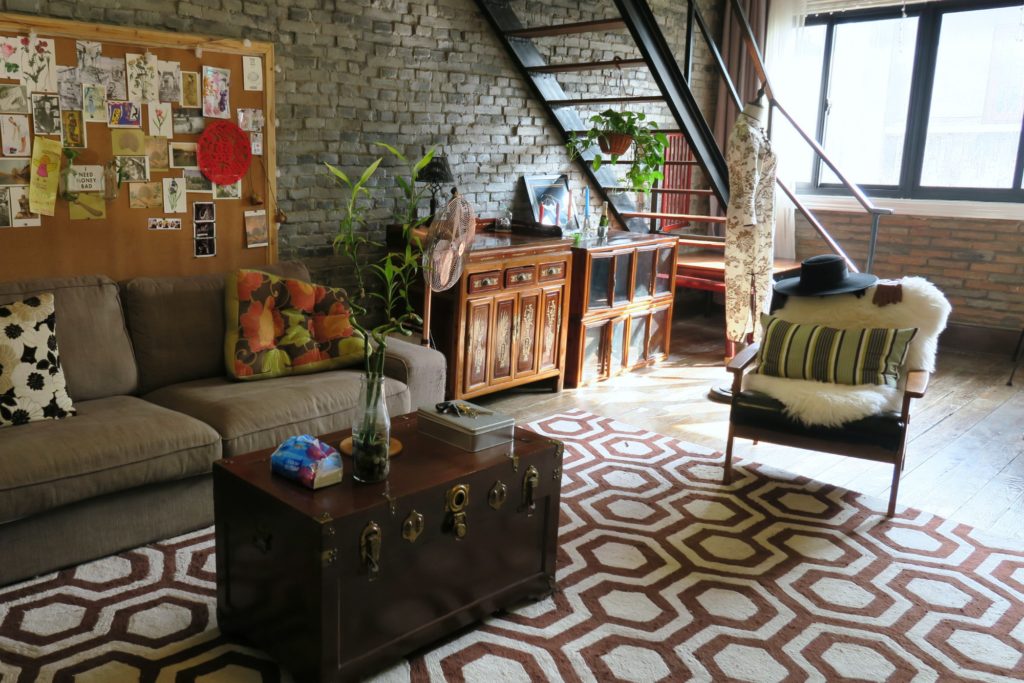
This photo was taken with the previous set of sideboard and cabinet in the apartment
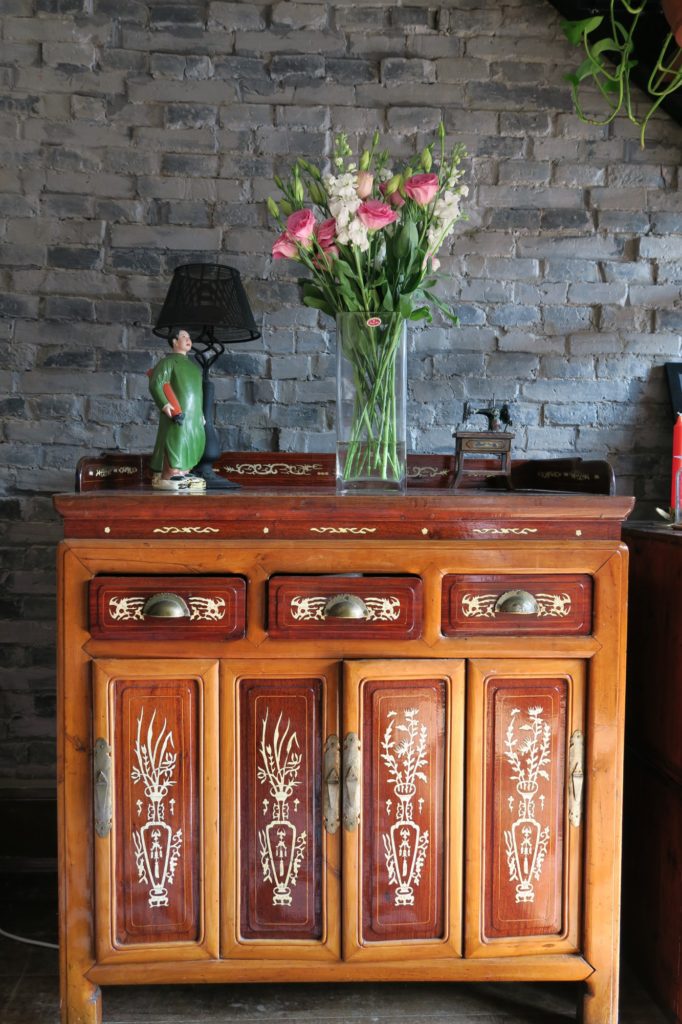
The previous antique sideboard with inlay – wider and with a bit more detailing than the current pieces
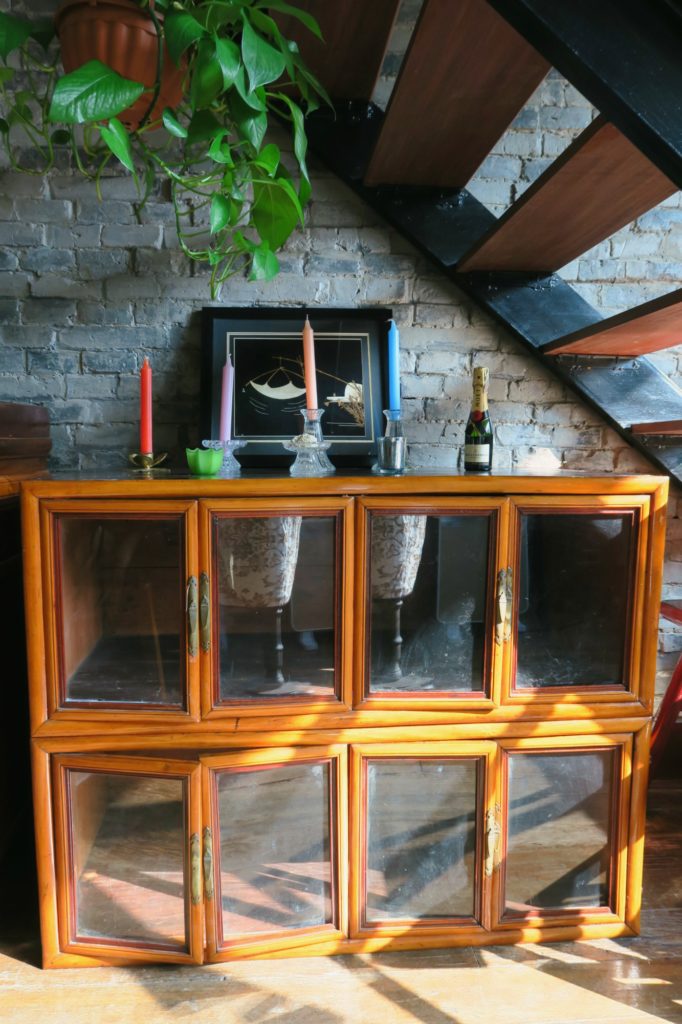
A two tier antique book shelf that was also previously in the apartment
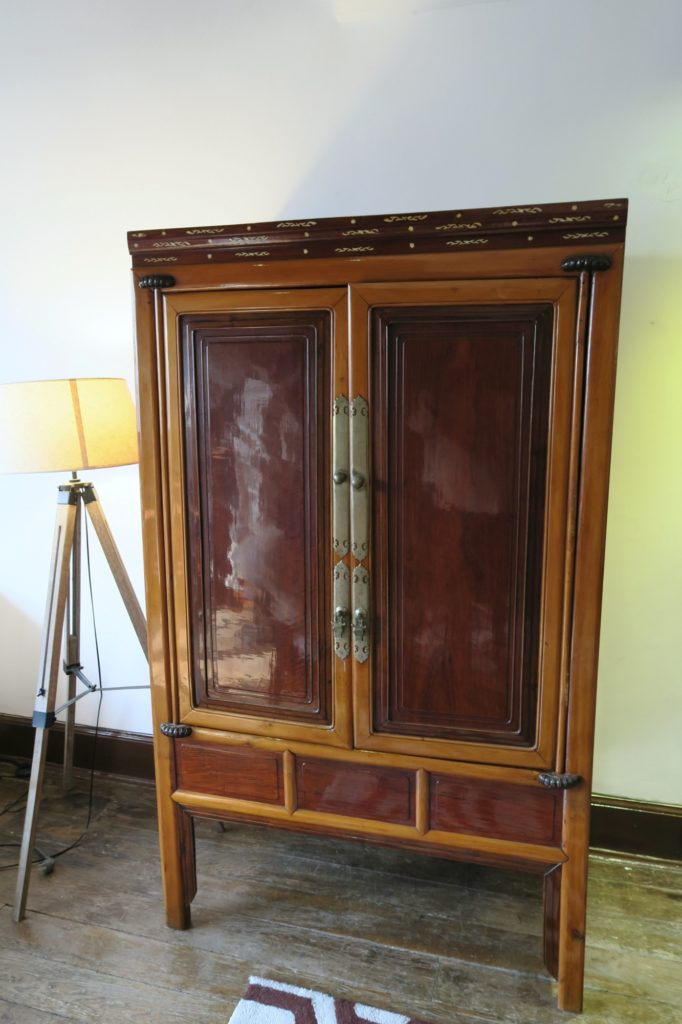
An antique cabinet with different coloured wooden trimmings, previously in the apartment in place of the current cabinet
Upstairs is a spacious bedroom, with an open-air closet that hangs off the ceiling beams. The great thing about this loft is that despite large windows in the living room, the windows are low enough that the bedroom doesn’t ever get too bright, so I could always have a sleep in on the weekend.
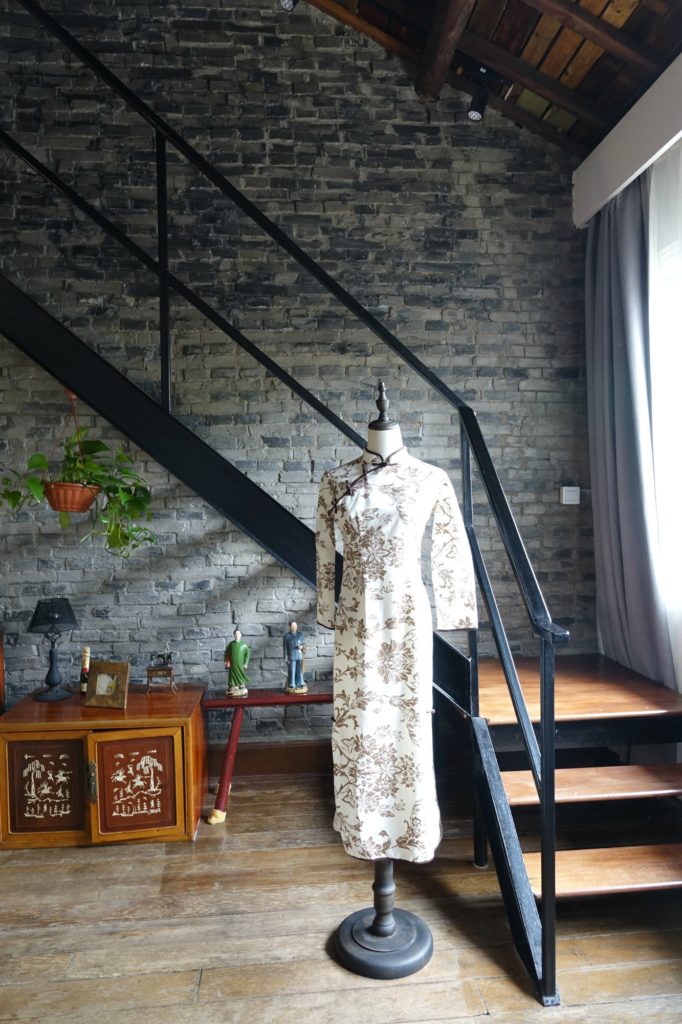
The staircase leading up to the loft bedroom
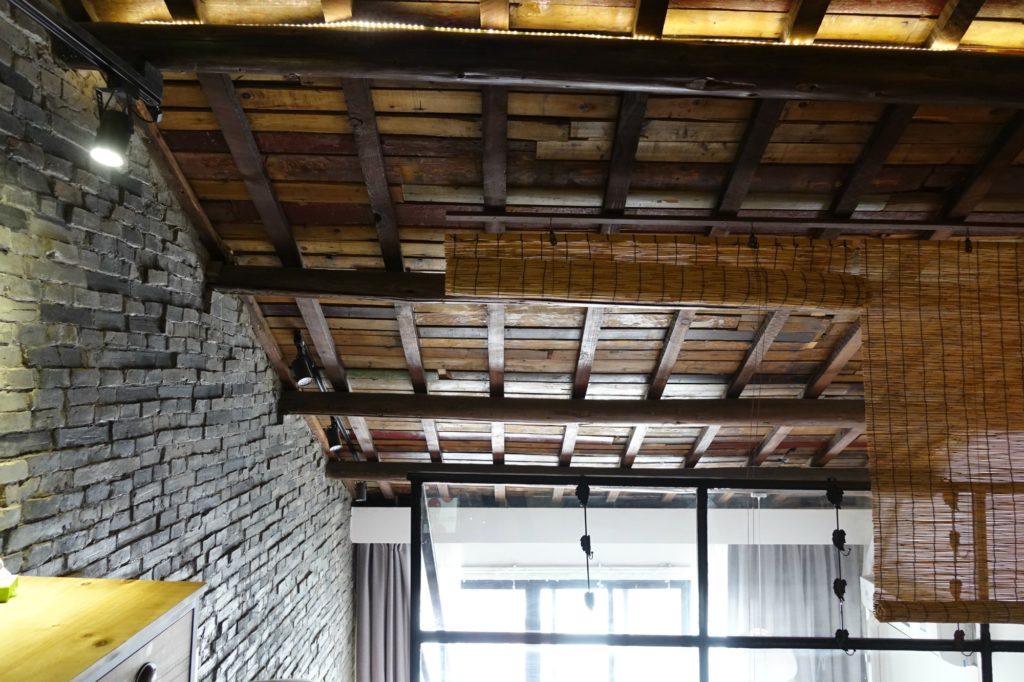
The amazing exposed ceiling and walls of the apartment
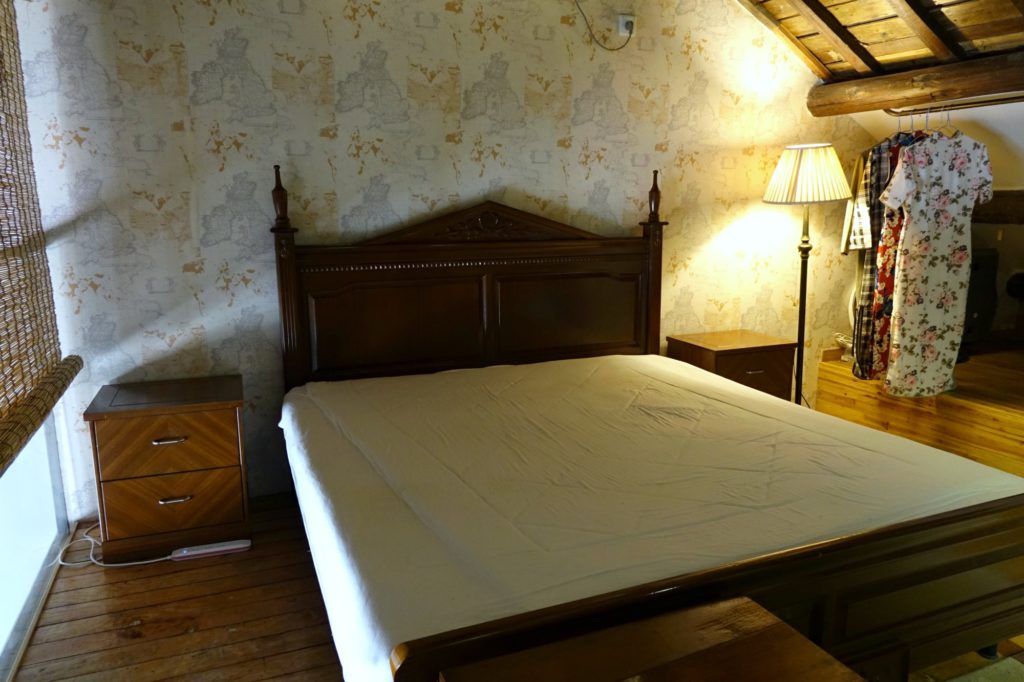
The bed and the open-air wardrobe – hanging racks built into the exposed ceiling beam
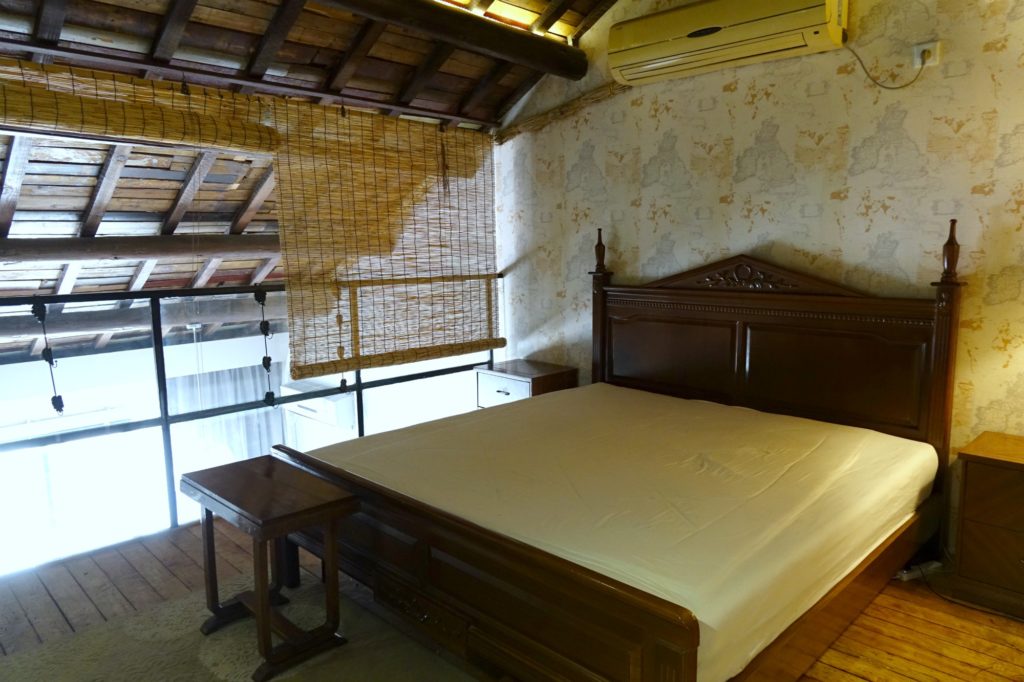
The bedroom didn’t ever get too bright since it was higher than window level, perfect for a weekend sleep in
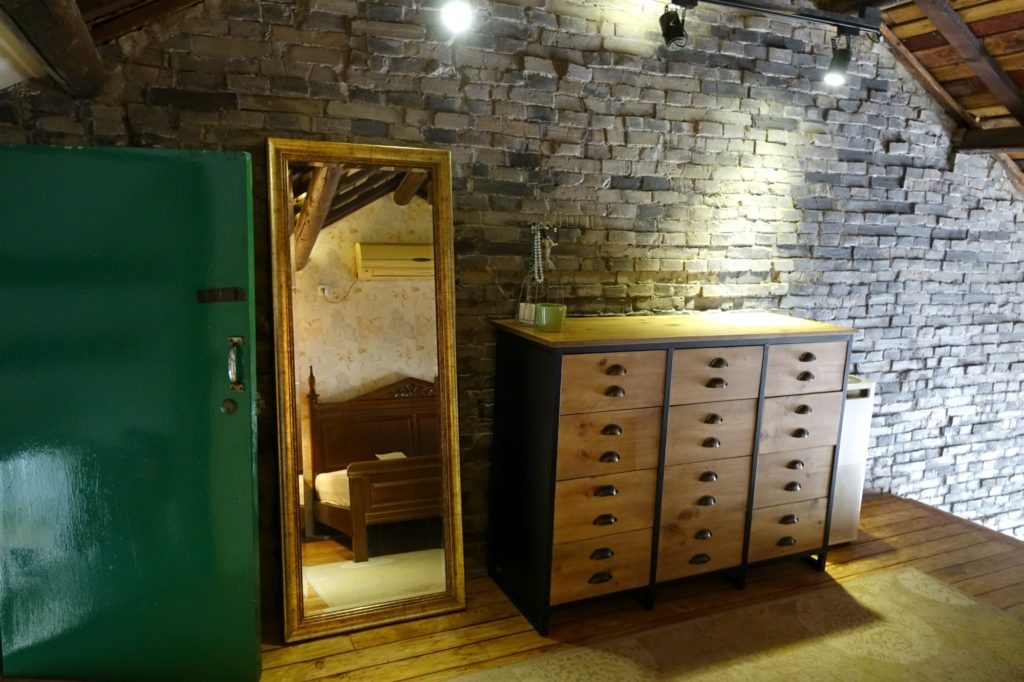
The modern industrial style chest is another piece I added to contrast with the existing furniture
The other thing I love about this place is that there is in fact a very spacious, modern kitchen, along with a bathroom. I didn’t take any pictures of these as this post is already overwhelmed with pictures, but they are actually across the hallway from the main living area. They can be accessed both via a separate door across from the main door, or down some steps from the bedroom (that’s where the green door on the left of the image above leads to). I believe that the kitchen used to be a shared kitchen for the two units on the third floor, before being closed in and partitioned to my current apartment. How do I know this? Well there are some tell-tale signs – the light switch for the area is outside in the hallway, and there are still some stair-railings and odd windows in the area. I love the quirk of the dual entrances and the visible history of the space.
Life in a lane house
I loved living in this lane house. It has such a wonderful blend of history, culture and community living. At the same time the high ceilings, large windows and spaciousness gave me a sense of peace amongst the buzz of downtown Shanghai, a haven to shield me from the outside world.
In the mornings, the community green grocer sets up in the centre lane of the compound, with fresh vegetables and fruit spread across large plastic bags and tarpaulin, unloaded from his tricycle. In the evenings, the older Shanghainese residents cook their dinners along the kitchens in the bottom floor, and smells of delicious Chinese food drifted out along the lane ways.
I will always remember this place, the quintessential Shanghainese apartment.
…and lastly, some fun facts about lane house living
I didn’t get a chance to cover these elsewhere in the post, but they are too good to be left out. So to end, here are a few random but fun facts about lane house living that I (mostly) enjoy –
1. People’s favourite place to hang up washing is… pretty much everywhere public, but those on electrical wires, right in the middle of the centre lane make the best spectacle. On a bright sunny day, be prepared to be dazzled with a vast array of old underwear and bedding.
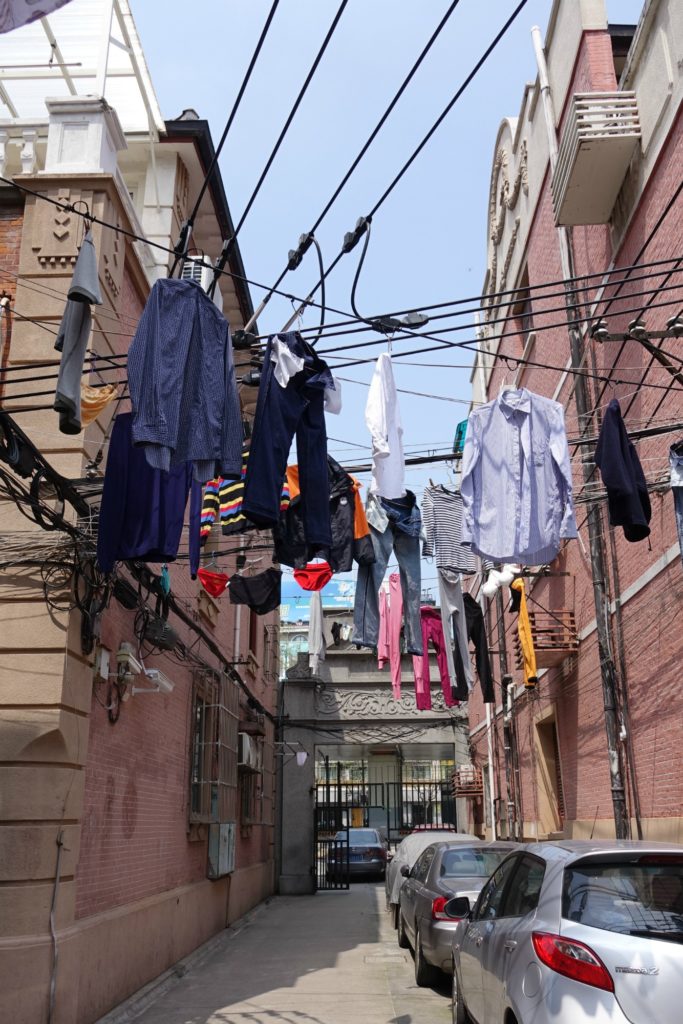
A dizzying array of old clothing hung on electrical wires. Behind them though you can see the original Western-influenced ornamentation on the corners of the buildings and at the back of the big entrance arch
2. For some reason, the municipality government decided that the best way to showcase the facades of their heritage buildings is with this ugly pastel maroon paint, thickly coated onto the beautiful red of the original brick work, and then draw with white lines to mimic individual bricks. This is a very common sight in older parts of Shanghai. I don’t really have any words for it.
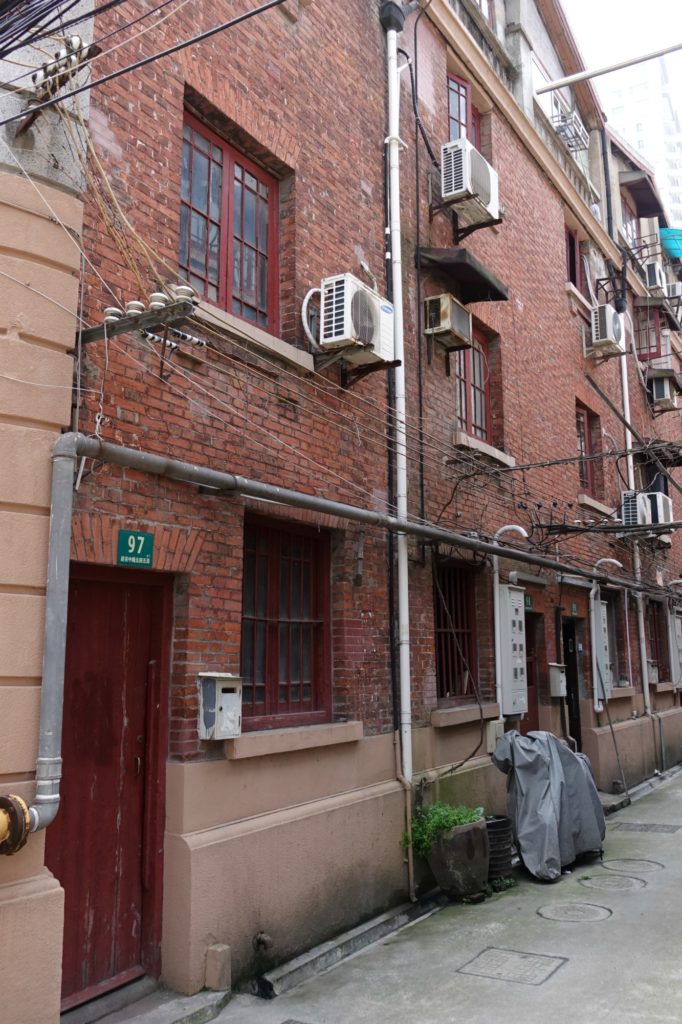
The beautiful original red bricks of the buildings
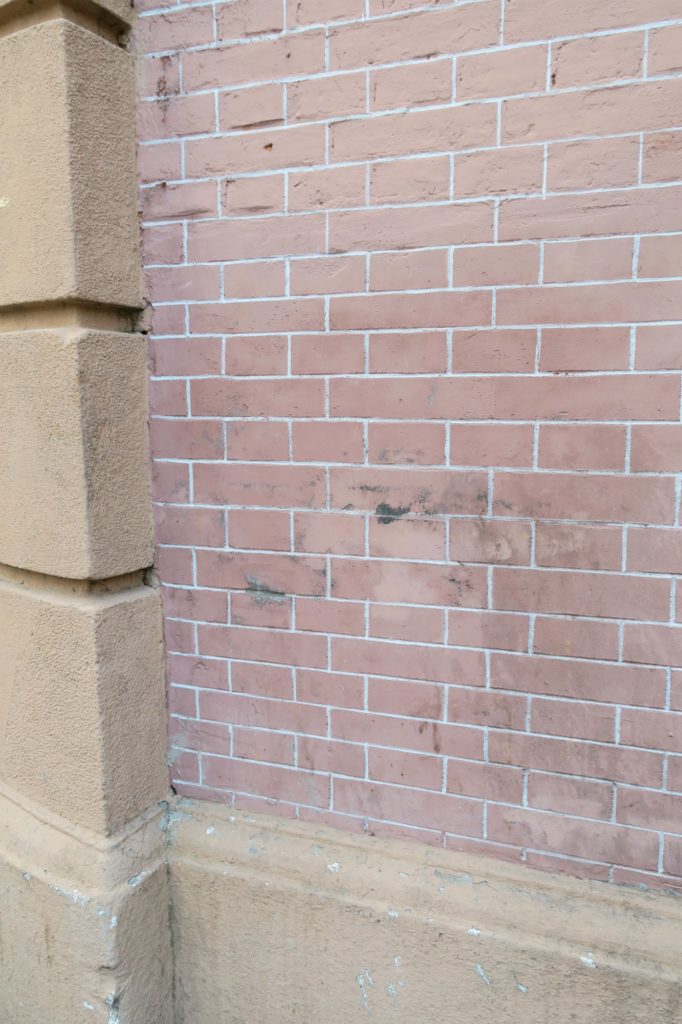
The local governments goes to great pains to paint over the original red bricks of old buildings to create this effect….
3. The staircases and hallways within these lane houses are notoriously narrow. But that doesn’t stop people from leaving their stuff everywhere. You can see the ground floor hall way of my lane house as an example, and I would say this is probably on the better end of the spectrum.
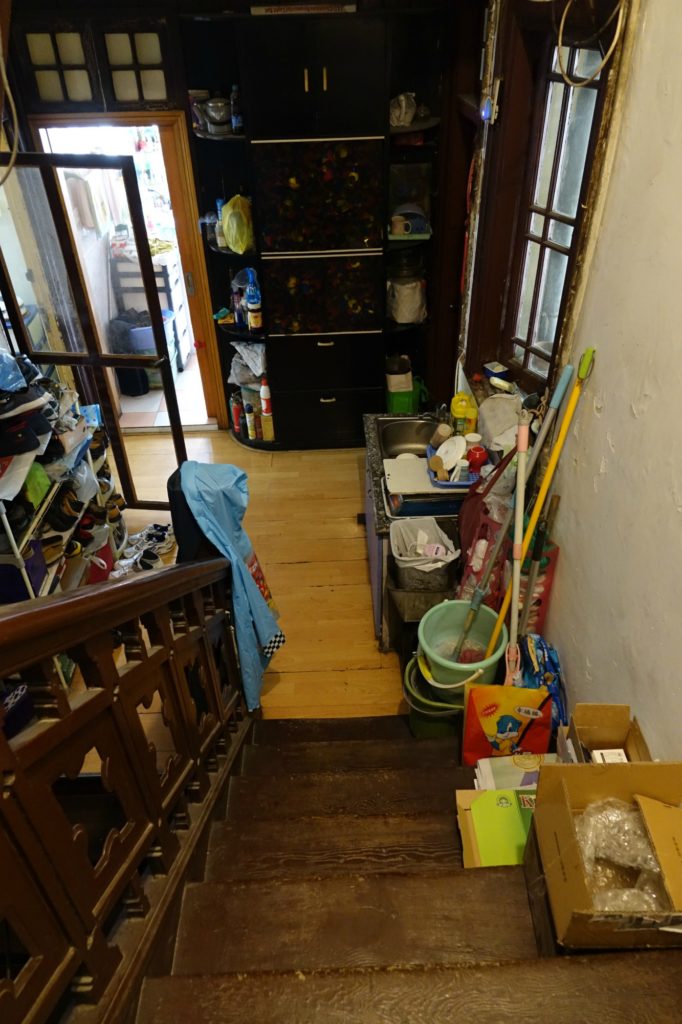
The narrow staircase between floors tend to be put to their maximum use and jam packed
If you’re interested in finding out more about the lane house experience, you might like to check out here and here.
I’m so happy to have found your blog. I saw your house at Apartment Therapy and fell in love. Beautiful, as your whole blog is. Can’t you keep this house for a creative outlet?
Hi Rita,
Thank you for visiting the blog and the compliments! I would love love love to keep this for a while longer, as I have already for almost 6 months, but I think the time has come for me to say goodbye. A really lovely girl is taking over the lease in a month, and I have my fingers crossed that in a few years we can try to move to another lane house, and be able to discover another beautiful place in this city 🙂